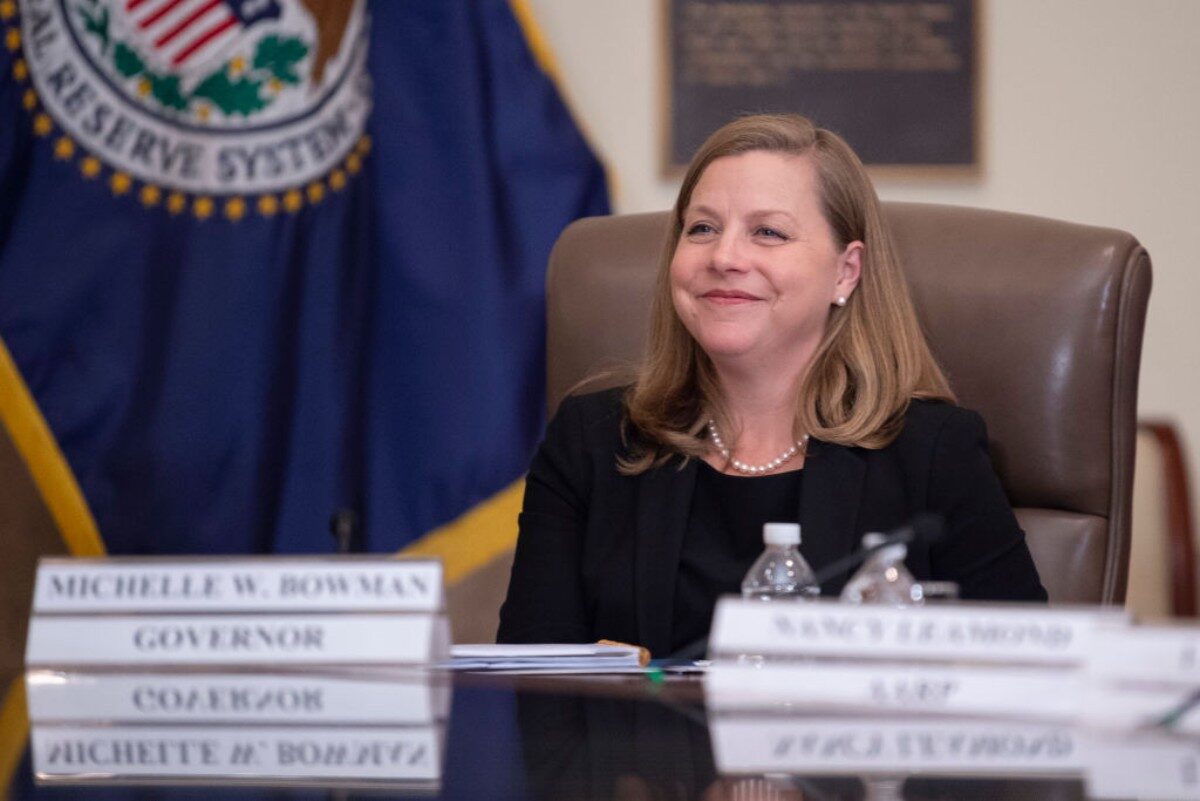


Federal Reserve Governor Michelle Bowman is troubled by the falling number of financial institutions in the U.S. banking system.
In the aftermath of the Silicon Valley Bank and Signature Bank failures, there has been more scrutiny surrounding the health and state of the financial sector.
At the end of 2021, there were 4,237 banks, down from the peak of 14,469 in 1983, representing a 71 percent decline over four decades, according to data from the Federal Deposit Insurance Corporation (FDIC).
“Should we be concerned about the decline in the number of banks in the U.S. banking system? In my view, we should,” Bowman said.
“Many factors have contributed to this decline in the number of banks,” she said in prepared remarks at the Wharton Financial Regulation Conference in Philadelphia on April 14.
“But a robust and diverse banking system ensures the wider access to and availability of credit, and that this credit reaches all levels of the income spectrum and supports a range of large and small businesses.”
Because smaller banks can outperform their larger counterparts during periods of economic stress, such as the 2008 financial crisis and the 2020 coronavirus pandemic, Bowman believes it “should be a regulatory and legislative imperative” to encourage new bank formation.
The central bank official said that there are plenty of barriers to de novo bank formations—listing regulatory hurdles, tight requirement frameworks, and the trend toward bank consolidation.
“In my view, right-sizing regulatory requirements, improving transparency, and supporting regulatory approaches that support new banks are important tools to promote healthy competition and reduce unintended consequences,” she said, adding that “a viable pipeline” is critical for the creation of new U.S. banks.
“There are troubling indications that we are falling short on this front, with a continued decline in the number of banks in the United States,” Bowman stated.
At the same time, the health of smaller outfits may be deteriorating as customers respond to the SVB and Signature collapses, with deposits at these institutions plummeting over the past month.
For the week ending March 29, deposits at small domestically chartered commercial banks tumbled 3.91 percent, according to the Fed’s H.8 Report.
Small bank deposits have been on a downward trend since March 2021. All commercial bank deposits have also been decreasing since November 2021 and dropped nearly 5 percent for the week ending March 29.
In the past month, there has been a discussion regarding regulations contributing to the latest banking crisis.
But while some have argued that federal authorities, particularly the U.S. central bank, could have done more to prevent the meltdown, Bowman does not think the regulatory regime had a role.
“While this episode has demonstrated that some changes may be warranted, I do not believe the failure of these two institutions is an indictment of the broader regulatory landscape,” Bowman said in her speech.
The Fed governor, who was appointed to the central bank by former President Donald Trump, reiterated the opinion of many of her colleagues: the U.S. banking system is “safe, sound, strong, and resilient, and standing on a solid regulatory foundation.”
“If we identify shortcomings in supervision and regulation, we should and will address those shortcomings,” Bowman added.
Michael S. Barr, the Fed Vice Chair of Supervision, will lead a review of the central bank’s SVB oversight and assess the various issues relating to the failures, such as digital bank runs, social media, and risk management of interest rates.
The report is scheduled for release on May 1.

